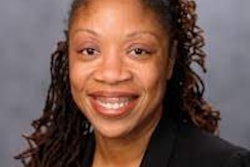
Women are underrepresented in the U.S. radiologist workforce, and geography appears to be a contributing factor, according to a study published online May 18 in the Journal of the American College of Radiology.
The findings suggest that a "one-size-fits-all" approach to addressing this workforce discrepancy may not be effective, wrote a team led by Dr. Andrew Rosenkrantz of NYU Langone Medical Center.
"Identifying which states, counties, and practices ... are associated with greater or lesser female representation could help in informing and implementing initiatives to reduce disparities and more actively engage women in the specialty as a whole," the group wrote.
Radiology has long had the lowest female representation among all medical specialties, with women representing only 22% to 24% of U.S. radiologists, according to Rosenkrantz and colleagues. For the study, the group sought to explore whether population-level characteristics such as geography contribute to this discrepancy.
The researchers used the Medicare Physician Compare database to identify the gender, location, and practice affiliation of all radiologists and the gender of all nonradiologists. They then analyzed female representation among radiologists at state, county, and individual practice levels.
Nationally, overall, Rosenkrantz and colleagues found that 23.1% of all radiologists were women, compared with 46.6% of Medicare-participating nonradiologists. Female representation was highest among family practice physicians (40.8%), followed by internal medicine (36.5%).
The researchers also found wide variations in terms of geography, however. Female representation among radiologists was highest in the Northeast and Mid-Atlantic regions and lowest in the West and Midwest.
| Female radiologist representation by U.S. geographical area | |
| Region | Percentage of female radiologist representation |
| Northeast and Mid-Atlantic | |
| Washington, DC | 39.3% |
| Massachusetts | 34.3% |
| Maryland | 31.5% |
| New York | 30.8% |
| Pennsylvania | 27.4% |
| New Jersey | 26.9% |
| Rhode Island | 25% |
| West and Midwest | |
| Iowa | 14.3% |
| Kansas | 14.3% |
| Nevada | 14.3% |
| Idaho | 11.7% |
| Montana | 10.7% |
| Wyoming | 9% |
Female representation in radiology was greater in more urban counties, as well as in those with larger populations, more college education, and higher household incomes, the researchers found. In addition, Democratic voting in the 2016 presidential election was the county-level factor with the strongest association with female representation among radiologists.
At the practice level, among 859 practices with 10 or fewer members, the percentage of women radiologists varied widely, with zero in 50 practices, 50% or more in 27 practices, and 100% in one practice. There were more women in academic practices (32.3%) than nonacademic practices (20.6%), the researchers found.
The study's results could help radiology develop effective and targeted ways to address the problem of women's underrepresentation in radiology, Rosenkrantz and colleagues wrote.
"Our insights, we hope, could direct the design of such activities as well as where such efforts [should be] focused," the group concluded.




















